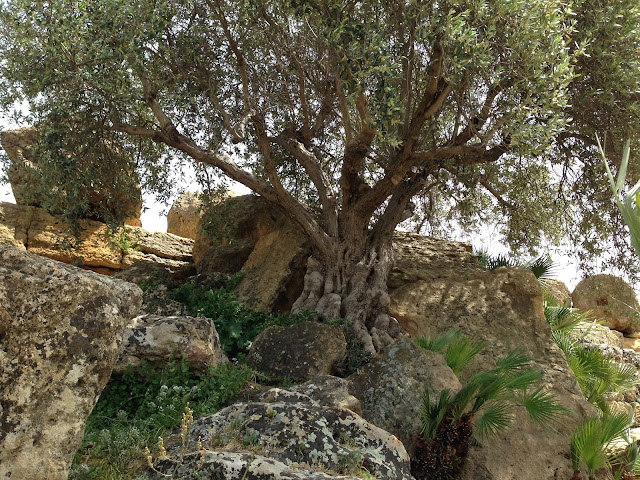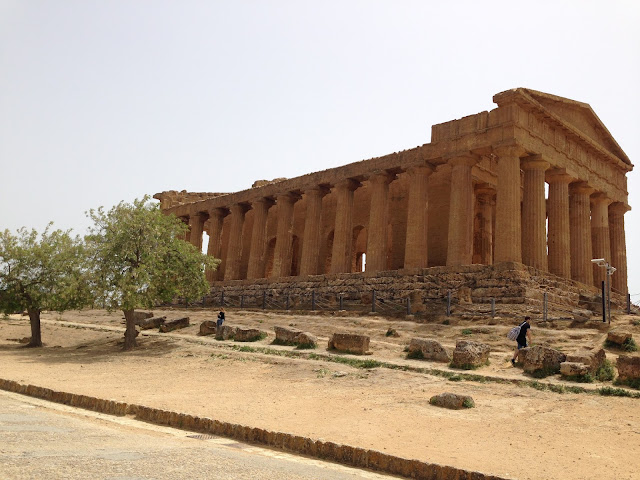Two days ago, as we moved west to east along the southern coast of Sicily, we visited the huge UNESCO World Heritage site of the Valley of the Temples, Agrigento.
Hardly a weed in sight here, but if you had seen the rubbish on the sides of the road in Agrigento city, you would not have believed it. Paper, plastic, household and commercial waste purposefully dumped by the side of the roads. As bad as Naples, if not worse.
But onto brighter things. The Valley of the Temples was very, very interesting. A 2 km walk from end to end. We took a taxi (3 euros each) from the lower carpark to the top gate so we could walk downhill, top to bottom.
The site is a string of grand buildings along a ridge overlooking the fertile plain below and outwards to the sea.
This city site survived for a very long time. First Greeks, then Romans, followed by Byzantines and on through the christian periods of the Dark Ages and the Middle Ages.
That is the current Agrigento on top of the hill - filthy monstrosity that it is.
But back to the ancient city - defensive walls were built atop the natural rock cliffs with funeral tombs carved into the rock along the roadside.
An old old roadway with cart tracks.
The most complete of the temples. It was used as a Christian church for a very long time and was, therefore, maintained.
Tombs cut into the stone ground.
A hypogeum - underground burial chambers.
Every rock has a purpose - this one safeguards an LED spotlight.
This was a massive temple dedicated, appropriately, to Hercules. You can see from the bare ground the amount of tourism this site gets. It is difficult getting photographs without strangers in them.
I'm not sure if these were water channels, drains or an extremely rutted road.
In front of the Temple of Olympian Jupiter were found two huge, stone caryatids that looked like this drawing. I had to check the wiki - "A caryatid is a stone carving of a draped female figure, used as a pillar to support the entablature of a Greek building."
Most of the stones were found and the caryatid reconstructed as it had fallen. In fact, there were two of them, the other not as complete.
There was so much more to see but after three hours we'd had enough and had a 120 km drive in front of us.
So we headed north east along the minor roads, lined with stone walls and poppies, away from the coast and up into the mountains to Piazza Armerina at an altitude of 700 metres, looking for a Roman Villa with the most extensive remaining mosaics in the world.
















No comments:
Post a Comment